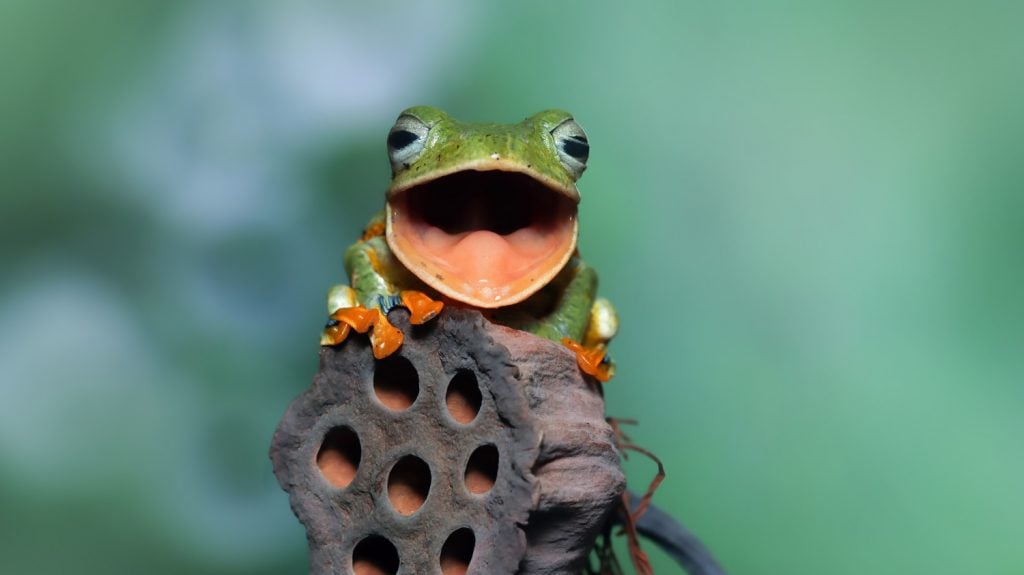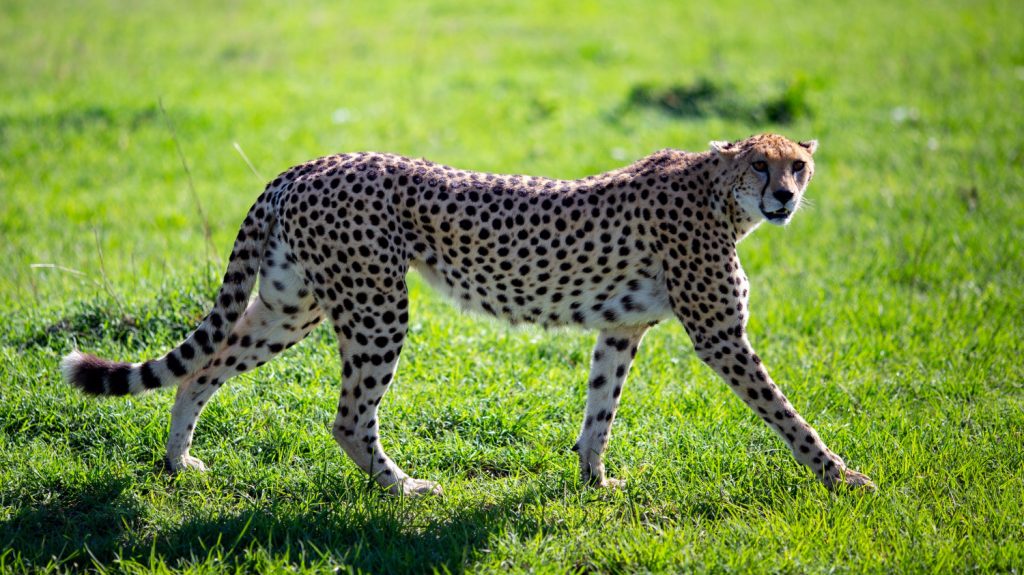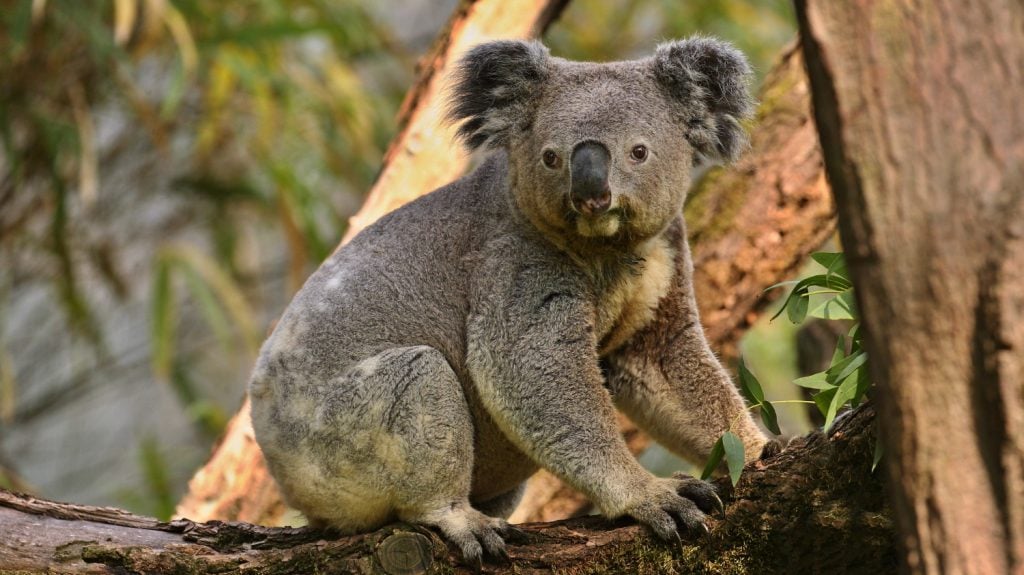Entertainment
What animals make funny noises?
Animals can be very vocal and expressive. Some even make sounds we find downright hilarious. Find out which animals have the funniest noises.
Advertisement
Many animals make hilarious sounds, and some of them may surprise you

When you think about what animals make funny noises, you might first think of shows like The Muppets or Sesame Street. But plenty of real-life animals out there make amusing sounds, too.

How does pet insurance work?
Worried about what would happen if your pet needed expensive medical treatment? Here's everything you need to know about pet insurance,
For instance, did you know that the male red-breasted merganser duck makes a noise that sounds like a cat meowing? Or that the African grey parrot can imitate the sound of a chainsaw?
Then there are the more classically funny-sounding animals, such as the hyena and the Lesser Antillean iguana.
Hear the hilarious noises of nature with these funny animals
It’s no secret that animals can be incredibly vocal creatures. From the roar of a lion to the chirp of a cricket, they communicate in various ways.
But what about the noises that they make that seem to defy explanation? These sounds make us laugh, scratch our heads, and sometimes even jump out of our skin. Here are just a few of the many animals that make funny noises:
Check if you are pre-approved for credit cards and loans with no impact to your credit score
You will be redirected to another website
You’ll receive messages for less than 1 week, with a maximum of 1 message per day. You can unsubscribe anytime by replying STOP. By submitting this form, I confirm that I am 18+ years old and agree to the Privacy Policy and Terms and Conditions. I also provide my signature, giving express consent to receive informational messages via automated emails, SMS, MMS text messages, and other forms of communication. Message frequency may vary as part of our good-faith effort to respond to your inquiry. Message and data rates may apply. Text STOP to cancel. I understand that my consent to receive communications is not a condition of purchase and that I may revoke my consent at any time.
Cheeta

With their high-pitched yelps and distinctive purrs, cheetahs are animals that make various funny noises.
In fact, studies have shown that cheetahs use a range of over 100 different vocalizations, more than any other cat species.
So what do all these noises mean? Researchers believe that they may be used to communicate with cubs, scare off predators, or simply express emotions.
One thing is for sure: cheetahs definitely know how to make themselves heard!
Possum
A possum is an Australian marsupial that is about the size of a house cat. Possums are nocturnal animals, and they are known for their funny-sounding noises.
Possums make a wide range of sounds, including hissing, growling, coughing, and screeching. These sounds are used to communicate with other possums and can be heard from up to 300 yards away.
Piranhas
While piranhas are often feared for their sharp teeth and voracious appetite, they are actually rather shy fish that tend to stick to themselves.
Can you imagine that piranhas are animals that make funny noises? When they are startled or feel threatened, they can produce a loud grunting noise that sounds somewhat like a dog barking.
This noise is produced by the fish rapidly contracting their swim bladder, an organ that helps them stay buoyant.
While the noise may be alarming to humans, it warns other animals in the area that a piranha is nearby and should not be messed with.
Mockingbirds
The mockingbird is a perky little bird that is found in North and South America. The bird is well known for its ability to imitate the sounds of other animals.
In fact, the bird can imitate the sound of over 200 different animals. This means he not only makes unusual noises, but mimics animals with funny noises!
The mockingbird gets its name from its ability to mock the sounds of other birds. The mockingbird will also imitate the sounds of insects, amphibians, and mammals.
The bird will even impersonate man-made sounds like a car horn or doorbell. In addition to its impressive vocal skills, the mockingbird is also known for its beautiful song.
A melodious mix of clicks, coos, and warbles.
Sea Lion
When sea lions vocalize, they often sound like they’re choking or gasping for air. In addition, their voices are often described as sounding “raspy” or “hoarse”, which sounds pretty funny in animals noises.
However, despite their less-than-melodic calls, sea lions are still able to communicate effectively with one another.
So next time you hear a sea lion’s strange call, don’t be alarmed- chances are, it’s just trying to say hello.
Koalas

No animal is quite as unique as the koala. These furry marsupials are well-known for their cuteness and their love of eucalyptus leaves. But what about their vocalizations? What sound does a koala make?
Interestingly, koalas don’t make your typical “animal noises.”
Instead, they communicate through a series of grunts, snores, and screams. Grunts are typically used as a form of greeting, while screams are usually reserved for threatened or aggressive situations.
And as for those snores? Koalas actually do these when they’re content and relaxed!
Gibbon
Gibbons are small apes known for their long arms and quick and agile movements. They are also known for their distinctive whooping calls, which can be confused with an ambulance’s alarm.
Gibbons use these calls to communicate with each other and have a wide repertoire of different vocalizations. While they make funny noises, other animals don’t know what an ambulance is – so it’s ok!
In addition to whoops, gibbons also produce various other sounds, including barks, screams, whimpers, and clicks.
Each sound serves a specific purpose, creating a rich tapestry of gibbon communication.
Impala
Although often thought of as timid, the impala can be quite vocal when startled. Its distinct call sounds something like “cluck-cluck-bawk” and has been known to startle even the most experienced safari-goer.
Some people say an impala makes a sound that is “a bit like a cross between a bark and a laugh.” While other describes the sound as being similar to a donkey braying.
Walrus
Walruses are large, lumbering marine mammals that are best known for their long tusks and whiskered faces.
They are also notable for their deep, guttural vocalizations, which have sounded like anything from a 50-gallon barrel filled with water to a group of foghorns blowing in unison.
In fact, the collective vocalizations of a group of walruses are so loud that they can be heard up to five miles away!
It is thought that these strange vocalizations may be used for communicating with other walruses, deterring predators, or simply expressing emotion.
How To Improve Mood And Stress Levels: 10 Simple Tips
Funny animal noises can certainly lift your mood when you hear them. However, there are other ways to boost a person’s emotional state and make them feel more relaxed from stress too!
Check out this next content with tips on improving your mood and stress levels.

How To Improve Mood And Stress Levels
Learn how to take action and manage your stress better. Here are 10 useful tips to help you feel better today!
Trending Topics

See how to apply for the PenFed Platinum Rewards Visa Signature® Card
Find out exactly how you can quickly and easily apply for The PenFed Platinum Rewards Visa Signature® Card. Read on for more.
Keep Reading
8 options of cool Nike shoes that you should get!
Nike has been releasing some of the most iconic and stylish shoes to date. Check out these 8 options for cool Nike shoes!
Keep Reading
How to make money from home for teens: 6 ideas
Struggling to find a way to make some extra cash? Check out this guide on how to make money from home for teens! There are plenty of options!
Keep ReadingYou may also like

Protester invades the pitch at the 2022 World Cup
A protester took his causes to the pitch on Monday night’s match between Portugal and Uruguay at the FIFA 2022 World Cup.
Keep Reading
6 Financial Education Tips for Youth
Discover the secrets to financial success! Get advice on how to navigate money matters with these 6 key financial education tips for youth.
Keep Reading
See how to apply for the BankAmericard® Secured Credit Card
Learn how easy it is to apply for the BankAmericard® Secured Card and why you should consider this card as part of a financial plan.
Keep Reading